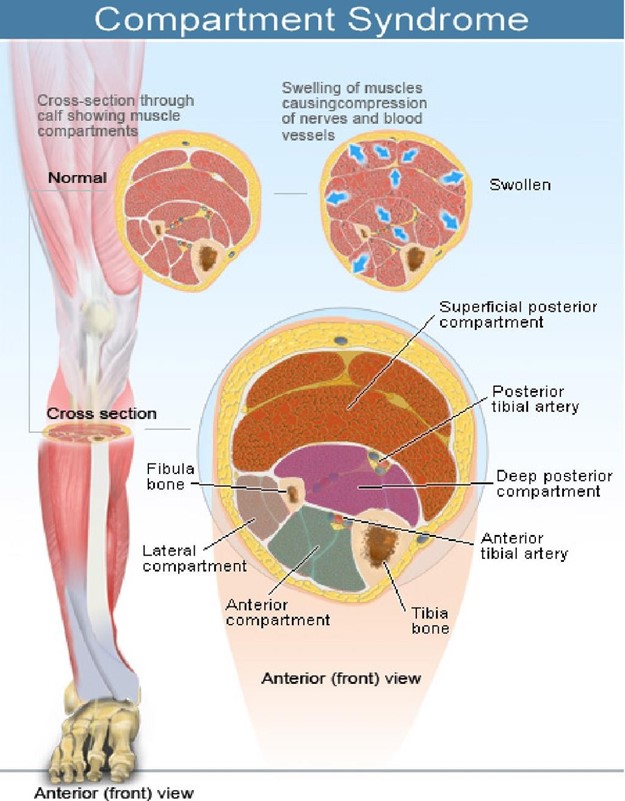A nurse in an emergency department is preparing a client for emergency surgery. The
client's blood alcohol level is 180 mg/dL. Which of the following actions is the nurse's priority?
Obtain consent for surgery.
Insert an indwelling urinary catheter.
Apply antiembolic stockings.
Insert an NG tube.
The Correct Answer is A
The nurse's priority is to ensure that the client has given informed consent for the surgery, which requires that the client is competent and understands the risks and benefits of the procedure. A client with a high blood alcohol level may not have the mental capacity to consent and may need a legal representative or a court order to proceed with the surgery.
The other actions are important but not as urgent as obtaining consent.
Nursing Test Bank
Naxlex Comprehensive Predictor Exams
Related Questions
Correct Answer is A
Explanation
Compartment syndrome is a condition in which increased pressure within a confined space compromises blood flow and tissue perfusion, leading to ischemia and necrosis. It can occur after trauma, fracture, or casting of an extremity. The early signs of compartment syndrome include intense pain with movement that is not relieved by analgesics or elevation, paresthesia, pallor, and decreased sensation and motor function of the affected limb. The late signs include absent distal pulses, cyanosis, coldness, and paralysis. Therefore, option A is correct.

Correct Answer is D
Explanation
A mastectomy is a surgical removal of one or both breasts, usually done to treat breast cancer. The nurse should respect the client's autonomy and provide factual information about the procedure, its benefits and risks, and possible alternatives . The nurse should also assess the client's readiness to learn, address any concerns or fears, and offer emotional support . Telling the client to get a second opinion may imply that the nurse does not trust the surgeon or doubts the necessity of the procedure.
Telling the client that they will be cancer-free if they have the procedure may be false or misleading, as there may be residual cancer cells or recurrence after surgery. Giving the client a list of other people who had the same procedure may violate confidentiality and may not be helpful or relevant to the client's situation.
Whether you are a student looking to ace your exams or a practicing nurse seeking to enhance your expertise , our nursing education contents will empower you with the confidence and competence to make a difference in the lives of patients and become a respected leader in the healthcare field.
Visit Naxlex, invest in your future and unlock endless possibilities with our unparalleled nursing education contents today
Report Wrong Answer on the Current Question
Do you disagree with the answer? If yes, what is your expected answer? Explain.
Kindly be descriptive with the issue you are facing.
